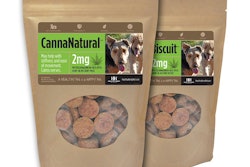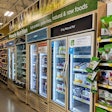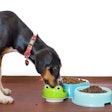
Pet food market analysts forecast that the global pet care market will continue to exhibit strong growth between 2016 and 2021. In the Euromonitor report “Healthy Pets, Happy Owners: Health and Wellness Product Development in Pet Care,” the authors projected that value sales will increase at a compound annual growth rate of 2.4 percent at constant prices. At that rate, the pet care market would reach US$117 billion in 2021. While growing, Euromonitor researchers believe the pet food market gradually will come to resemble the baby food market, with a focus on ingredient quality and pet food safety.
Trends driving pet food market growth
While millennial pet owners increasingly opt for dogs or cats instead of babies, the pet food they and other age groups buy tends to meet the criteria of human food trends. Owners are increasingly unwilling to compromise on the quality of food they feed their pets, according to Euromonitor analysts.
“Globally consumers are looking for minimally processed or unprocessed products, in line with the clean label trend, with an increasing desire for whole foods, ancient grains, green tea and plant-based proteins from nuts and seeds,” said Paula Flores, head of pet care at Euromonitor International, in an email.
“‘Free from’ is another trend that has gained increasingly more followers as allergies are on the rise or purely due to being perceived as healthier. Its strong performance is mainly due to consumers perceiving such products as ‘healthful’.
“The days when products which are free from gluten, lactose or dairy were consumed only by those with intolerances are gone. As pet owners continue to increasingly humanise their pets, some of them even treating them as their ‘fur babies’, trends in human food have percolated down to the pet food chain. Health and wellness trends are particularly relevant for pet care.”
Internet sales of pet food grow in importance
Another trend in pet food sales is the increasing growth of sales volume online through distributors like Chewy.com and Amazon.com. The trend towards internet-based pet food sales is especially strong in East Asia, according to the report.
“With smartphones and online connectivity increasingly ubiquitous in many markets, internet retailing continues to grow in importance as a distribution channel in pet care, particularly in East Asia,” said Flores. “In China and South Korea, internet retailing now accounts for close to one third of dog and cat food sales, while at least 80 percent of households now have broadband internet access in most Western European countries. In terms of health and wellness, internet retailing is lowering barriers to entry, making it easier and cheaper for niche brands to launch products and to export to new markets.”
“If we dive into the differences amongst regions we can see that over 17% of total pet care sales are online in Asia Pacific. This is really quite relevant and indeed quite a high % share and it is related with the fact that Asian pet owners are young, and very technological with a very strong penetration of mobile phones and where the digital space is quite developed. And let’s not forget this is the home of such leading players as Alibaba and Tmall. In China, leading manufacturers have adjusted their distribution strategies to pay more attention to this growing channel, by opening official online flagship stores on the leading B2C platforms in China, such as Tmall.com and JD.com. In Western Europe, it accounts for 8% but the pace has been picking up with such strong markets as the UK where retailing is quite developed and consumers are very used to online shopping. And in the US, competition has just been heating up with players really making inroads and leveraging omnichannel strategies. However, the latest development has been that Chewy has just been announced to be acquired by PetSmart (the largest retailer).”
6 pet food market trends in the report
- Novel protein sources - The types of protein used in dog and cat food are likely to become more diverse. Protein-rich alternatives to meat, such as insects and algae, are likely to slowly but steadily percolate into the mainstream market.
- Online disruption - The growth of internet retailing has made it easier for pet food start-ups to leapfrog bricks-and-mortar retailers and reach consumers directly, challenging the dominance of incumbents and accelerating the pace of innovation in health and wellness.
- Older pets, fatter pets - Lengthening life expectancy for dogs and cats and the increased prevalence of overweight and obese pets are major drivers of demand for health and wellness pet food and pet care products.
- Connected pets - With such gadgets as activity trackers and wearables (for humans) going mainstream in the consumer electronics market, similar devices are becoming part of the day-to-day lives of a growing number of pets.
- Humanization accelerating - Until fairly recently, it would take years for an innovation in the fmcg market to make the leap into pet food, but increasingly this transition can be measured in months.
- Simplicity - Many increasingly equate simplicity with naturalness, so shorter ingredient lists are becoming synonymous with quality in the minds of some consumers.


















